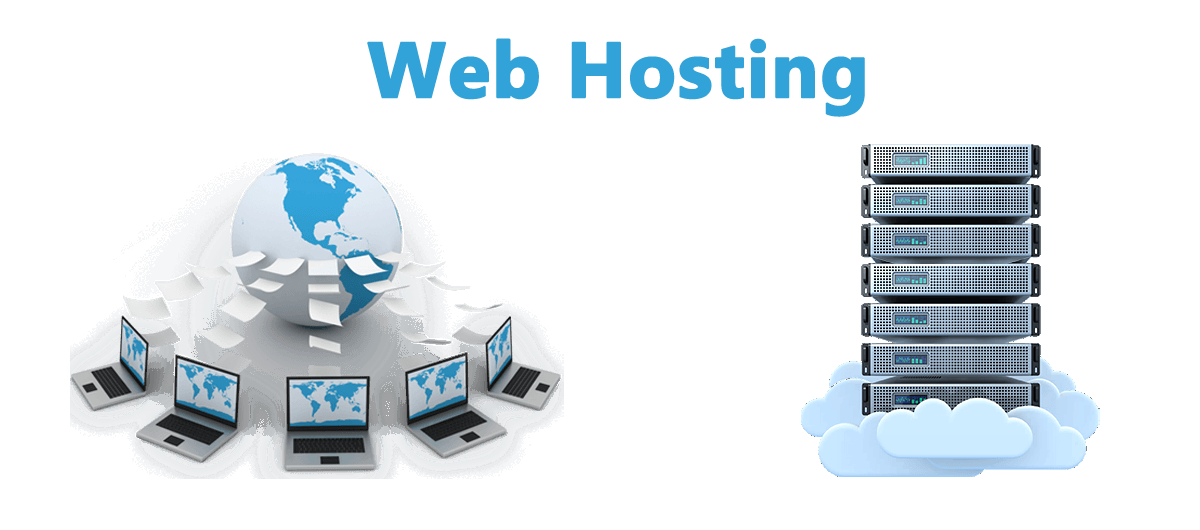Cloud computing, or cloud services, is an umbrella term that refers to accessing computer services via the internet. This is done by using remote computer hardware such as a personal computer, a laptop, or a server. Cloud services make it much easier to access the services you need without having to use your own hardware or install software on your own computer. However, technology is still evolving. With the growth of technology, cloud computing has become a valuable asset for businesses. Cloud computing is one of the most important trends in the technology world. This is because it has the potential to improve many aspects of our lives. In this blog post, we will learn 6 future trends and predictions about cloud hosting.
What is cloud computing?
Cloud computing is a term that encompasses a number of technologies, such as the cloud and cloud storage, that allow users to store their data on remote servers accessed through the internet. The idea of cloud computing is to allow users to access their data from anywhere, at any time. It is a flexible and scalable form of computing that can be tailored to the individual needs of the user. The rise of cloud computing is an example of a technology that has been predicted to change the world and is already doing so.

6 Future Trends And Predictions
In the future, it is predicted that cloud computing will become the most common form of computing. The reason for this is that it is more cost-effective and more efficient. Cloud computing is also predicted to become even more popular as the cloud becomes more and more accessible.
Some of the cloud computing future trends and predictions are given below:
1. Quantum computing
Quantum computing is still in its early developmental stages, but it is already having an impact on the field of cloud computing. There are a number of different ways that quantum computing can be used in cloud computing, and the potential applications are only limited by the imagination.
Here are some of the most promising future trends and predictions for quantum computing in cloud computing:
One of the most promising applications for quantum computing in cloud computing is increased security. Quantum computers are much more powerful than classical computers, and they can be used to break through traditional security measures. This means that companies will need to find new ways to protect their data in the future.
Another major benefit of quantum computing is improved performance. Quantum computers can perform certain tasks much faster than classical computers, which could lead to shorter wait times and increased efficiency for users of cloud-based services
Quantum computers are still very expensive, but as they become more widely available, their costs are expected to decrease. This could make quantum-based cloud services more affordable for businesses and consumers alike.
It offers a high degree of flexibility and scalability, which could lead to new and innovative applications for cloud computing. For example, quantum computers could be used to create custom-tailored algorithms for specific datasets or workloads.
2. Cloud Regions
The cloud region is a global network of data centers that are physically separated but interconnected, allowing for the sharing of data and resources across borders. The cloud has revolutionized the way businesses operate and has led to the rise of new business models. The future of the cloud region is likely to be even more exciting, with new technologies and services that will further enhance its capabilities.
Here are some of the key trends and predictions for the cloud region in the future:
A hybrid cloud is a combination of on-premises, private, and public cloud resources. This model offers organizations the flexibility to choose which workloads to run in each environment, based on their specific needs. As businesses increasingly recognize the benefits of this approach, it’s expected that hybrid clouds will become more widely adopted in the coming years.
Security is always a top concern when it comes to storing data in the cloud. As the number of cyberattacks continues to rise, organizations will need to implement stronger security measures to protect their critical data and systems. In particular, they’ll need to pay close attention to identity and access management, as well as data encryption.
AI is already being used in many different industries, including healthcare and finance. However, its use cases are constantly expanding, and it’s expected that AI will play an even bigger role in cloud computing in the future.
3. Edge Computing
As organizations continue to move more of their workloads to the cloud, they are also starting to realize the benefits of edge computing. Edge computing is a type of cloud computing that allows data and applications to be processed closer to where they are needed, which can often result in faster performance and lower costs.
The main benefits of edge computing are that it can help to reduce latency. Latency is the amount of time it takes for data to travel from its source to its destination. By processing data closer to its source, edge computing can help to reduce the amount of time it takes for data to reach its destination, which can often lead to better performance. It can also help organizations save money on bandwidth costs. Bandwidth is the amount of data that can be transferred between two points in a given period of time. can also improve security. When data is processed at the edge, it often means that it never has to leave an organization’s secure network.

The future of cloud computing is likely to see increased adoption of edge computing, which refers to computational resources being located close to data sources and end users. Edge computing can help reduce latency and improve performance for applications that need real-time processing or require high bandwidth.
For example, augmented reality and virtual reality applications often need low latency in order to be realistic, so edge computing could be used to process the data for these applications. In addition, predictions for the future of cloud computing include an increase in the use of AI and machine learning. This is because these technologies can be used to automate tasks, improve efficiency, and provide insights that would not be possible without them.
4. Improved Data Storage Capacity
The amount of data has dramatically expanded over the previous few decades, and it will continue to multiply at the same rate in the future. Additionally, there is a want for more data storage space given that practically every firm has switched to a cloud platform. Better cloud storage is the newest trend since cloud networks have already made traditional storage devices unnecessary.
The businesses will endeavor to increase cloud storage, and because numerous digital behemoths will undoubtedly enter this market, there will be fierce rivalry. The user will profit from this outrage since they will receive greater storage and affordable market costs.
5. Disaster Recovery
Despite how safe, adaptable, and useful your cloud network is, disasters are unavoidable. Consequently, a well-organized catastrophe management strategy would be a great future trend that would be beneficial. Every company using cloud platforms requires a plan for dealing with servers that can crash, fail, or sustain damage and cause data loss.
There are still methods for recovering from disasters. The tech behemoths operating in the cloud business still need to handle a gap in disaster recovery and data backup. Because of this, a lot of tools and apps are likely to be released in this sector. These are the prevailing trends that will determine how cloud storage and security developments in the future. In the near future, everything will run and function on the internet, hence the need for cloud networks will inevitably rise.
Additionally, a well-organized, secure network with cutting-edge capabilities would be necessary to manage any organization’s incredibly large databases with the utmost efficiency. That unmistakably shows that all of the trends listed here will become more popular in the years to come. Additionally, cloud networks will eventually be present in every industry.
6. Serverless Computing
Cloud computing has revolutionized the IT industry and changed the way businesses operate. Technology has made it possible for businesses to be more agile and responsive to change. Serverless computing is a new trend in cloud computing that is gaining popularity. In this model, the cloud provider manages the infrastructure and resources required to run the application.
This allows businesses to focus on their core business functions and save time and money on IT operations. There are several advantages of using serverless computing.
First, it eliminates the need for businesses to provision and manages servers. This reduces costs and improves efficiency. Second, it enables businesses to respond quickly to changes in demand. They can scale up or down their applications without having to provision new servers. Third, serverless computing reduces the risk of downtime because there are no physical servers that can fail. Finally, it provides better security as the cloud provider takes responsibility for managing the infrastructure and resources.
The future of serverless computing looks bright as more businesses adopt this model. It is expected that the market for serverless services will grow at a CAGR of 42% from 2019 to 2024. This growth will be driven by the benefits of serverless computing, such as reduced costs, increased agility, and improved security.
Conclusion
Cloud computing is a hot topic nowadays and there are a lot of trends and predictions about how it will develop in the future. Due to the ever-changing nature of cloud computing, it is difficult to predict what it will look like in the future. However, it is still possible to make some educated predictions about what is likely to happen. One thing that is likely to happen is that cloud computing will become more accessible and less expensive. This will be possible through the use of technology. Another thing that is likely to happen is that cloud computing will become more mobile. This will be largely due to the increased use of mobile devices. The last thing that is likely to happen is that cloud computing will become more integrated with other technologies.
Hopefully, this blog post has provided you with much knowledge about cloud computing and its future trends and predictions.
For more such blog posts head on to our Blogs section.
Related Articles: All About Cloud Computing



